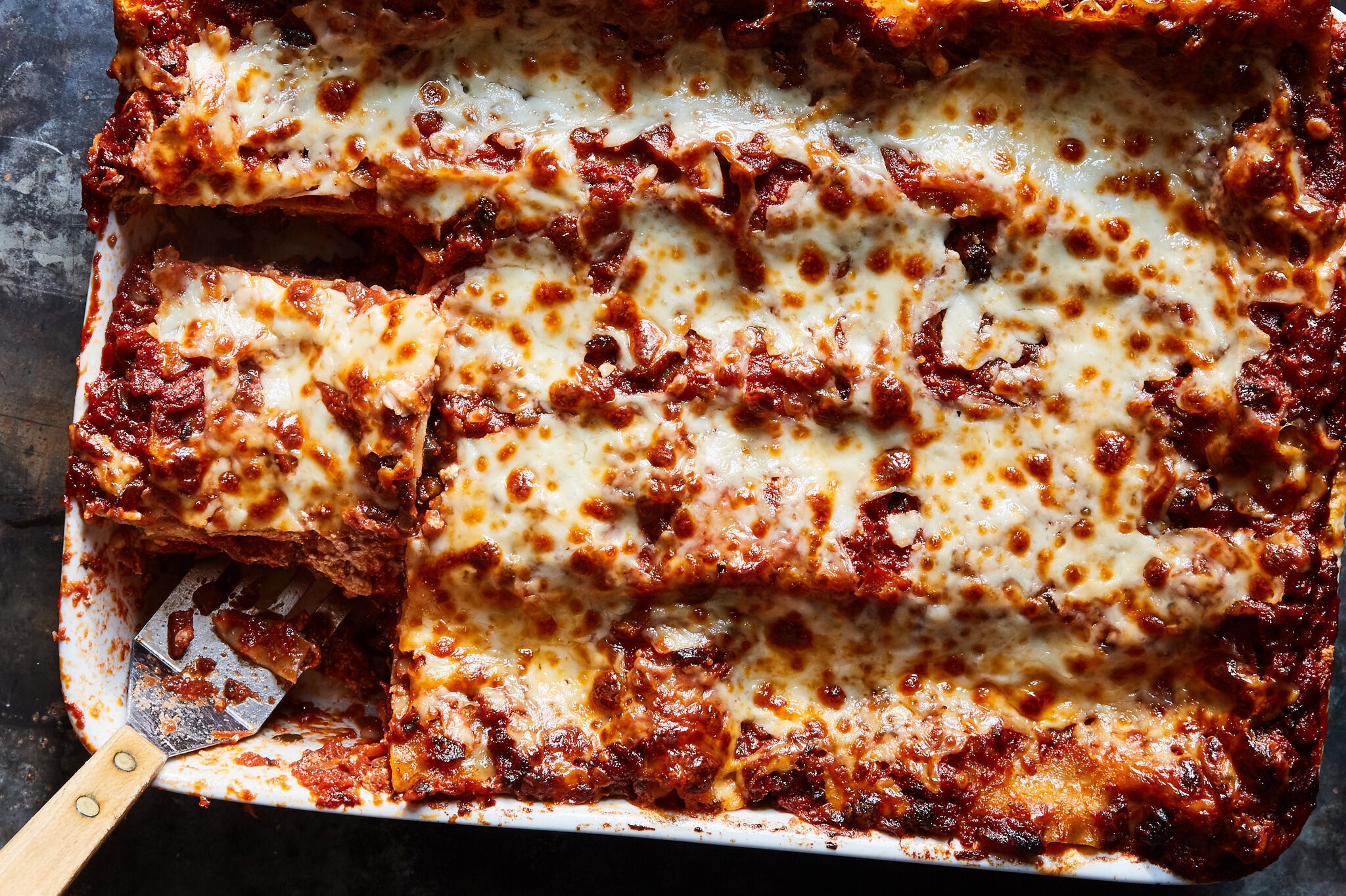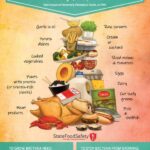It’s a common kitchen dilemma: you’ve just cooked a delicious meal, and now you’re faced with the question – can you put hot food directly in the fridge? Many of us have heard warnings about placing steaming dishes in the refrigerator, fearing it will raise the fridge temperature, spoil other food, or even damage the appliance itself. But is there any truth to these concerns?
For years, the idea of letting food cool completely before refrigeration has been passed down through generations. However, modern food safety guidelines and experts actually encourage a different approach, especially when it comes to preventing bacterial growth. So, let’s delve into the facts and clear up the confusion around refrigerating hot food.
The Lingering Myth: Iceboxes and Old Refrigeration Worries
The apprehension about putting hot food in the fridge largely stems from outdated practices related to iceboxes, the refrigerator’s 19th-century predecessor. These early cooling devices, as food historian Helen Peavitt explains, relied on blocks of ice to maintain low temperatures within an insulated box. Introducing hot food into an icebox would indeed cause the ice to melt faster, demanding more frequent ice replacements and reducing the overall cooling efficiency.
Modern refrigerators, however, are a different story. Equipped with chemical refrigerants and fans for air circulation, they are designed to handle temperature fluctuations much more effectively. The United States Department of Agriculture (USDA) and the Food and Drug Administration (FDA) both confirm that it is safe, and often recommended, to refrigerate hot food promptly to minimize the time food spends in the “danger zone” – temperatures between 40°F and 140°F (4°C and 60°C) where bacteria multiply rapidly.
Safe Refrigeration of Hot Food: Key Steps for Best Practice
While it’s safe to put hot food in the fridge, doing it correctly is crucial for both food safety and refrigerator efficiency. The key is to manage the cooling process effectively.
Portioning is Paramount: The most important step is to divide large quantities of hot food into smaller portions. Think about breaking down a large roast turkey or ham into slices, or transferring big pots of soup or casseroles into shallow containers. Containers should ideally be no more than two inches deep to facilitate rapid cooling.
Loosely Cover Initially: When first placing hot food in the refrigerator, consider covering containers loosely. This allows steam to escape, which speeds up the cooling process and prevents condensation buildup inside the container. Once the food has cooled down somewhat, you can seal the containers tightly.
Time is of the Essence: The FDA recommends refrigerating perishable foods within two hours of cooking or removing them from heat, and within one hour if the ambient temperature is above 90°F (32°C). This guideline applies to hot food as well. Don’t leave hot food sitting at room temperature for extended periods.
Fridge Air Circulation: Ensure there’s enough space in your refrigerator for cold air to circulate around the containers of hot food. Overcrowding can hinder cooling and reduce efficiency.
Minimize Fridge Workload: To lessen the impact of hot food on your refrigerator’s energy consumption, you can take a few extra steps to cool food down slightly before refrigerating. Stirring hot food occasionally can help dissipate heat. An even more effective method is to place the container in an ice water bath – a sink or large bowl filled with ice and water – for a short period before moving it to the fridge. This pre-cooling step reduces the thermal load on your appliance.
Monitor Fridge Temperature: Regardless of whether you’re refrigerating hot food, it’s always wise to ensure your refrigerator is functioning correctly. Use appliance thermometers to monitor the temperature in both the refrigerator (aim for 40°F or below) and freezer (0°F or below). This practice provides peace of mind and ensures optimal food safety.
Freezing Hot Food: A Slightly Different Approach
When it comes to freezing hot food, the principles are similar, but there’s an extra emphasis on rapid cooling to preserve food quality.
The USDA highlights that faster freezing leads to smaller ice crystals, which are less damaging to food texture. This is especially important for maintaining the quality of meats, seafood, fruits, vegetables, and creamy sauces during thawing.
Therefore, while you can technically put hot food in the freezer, it’s best to expedite the cooling process beforehand. Using an ice bath to cool food down significantly before freezing is highly recommended. Alternatively, you can give the food a head start in the refrigerator before transferring it to the freezer.
Leave Headspace When Freezing Liquids: When freezing liquids like soups or broths in containers, remember to leave adequate headspace at the top. Liquids expand as they freeze, and insufficient space can lead to containers cracking or bursting. Kantha Shelke, a food safety expert at Johns Hopkins University, suggests leaving about an inch of headspace for pint-sized containers and 1.5 inches for quart-sized or larger containers. Even for solids, leaving about half an inch of headspace is advisable to allow for expansion and ensure a good seal.
Choosing the Right Containers for Fridge and Freezer Storage
Selecting appropriate containers is important for both refrigerator and freezer storage, impacting food safety, quality, and convenience.
Glass Containers: Experts like Dr. Shelke often recommend glass containers, particularly tempered glass, for food storage. Glass is non-reactive, meaning it won’t absorb odors or stains. It’s also oven and microwave-safe (check for oven-safe labeling), making reheating convenient. However, glass can be heavier and more prone to breakage.
Silicone Bags: Silicone bags are a lighter and more flexible alternative. They are not fragile and take up less space when empty. However, silicone can sometimes retain odors and may require specific cleaning methods to remove stubborn smells.
Aluminum Foil and Freezer Paper: For irregularly shaped items like casseroles or large cuts of meat, aluminum foil and freezer paper can be handy for wrapping and freezing.
Avoid Certain Plastics: Dr. Shelke advises against placing hot food directly into plastic containers, especially those not designed for heat. Certain plastics can leach chemicals like BPA, phthalates, and potentially PFAS, particularly when exposed to heat or when storing acidic or oily foods. Single-use plastics like takeout containers and yogurt tubs are not intended for repeated use or hot food storage. Always opt for containers labeled as freezer-safe for freezer storage.
Cooling Food Outdoors: Proceed with Caution
Cooling food outdoors might seem like a good idea, especially in colder temperatures, but it requires caution.
While outdoor cooling can help initiate the cooling process, it’s not a reliable substitute for refrigerator or freezer storage, according to Betty Yaohua Feng, a food science professor at Purdue University. Outdoor temperatures can fluctuate unpredictably, and food can be exposed to dust, insects, and wildlife, increasing the risk of contamination.
If you do choose to cool food outdoors temporarily, ensure containers are tightly sealed to protect against contaminants, avoid direct sunlight, and constantly monitor the temperature to ensure it stays below 40°F. Using a cooler with ice packs is a safer alternative for outdoor cooling, particularly for drinks and less perishable items.
Holiday Fridge Management: Making Room for Leftovers
Holidays often mean large feasts and a refrigerator overflowing with leftovers. Helen Peavitt suggests preemptively decluttering your fridge before big events. Surprisingly, many items commonly stored in the refrigerator don’t actually need to be there. Unopened jars of pickles, ketchup, many types of fruit and berries, and peanut butter are examples of foods that can often be stored at room temperature, freeing up valuable fridge space for perishable leftovers.
By understanding the principles of safe food cooling and refrigeration, you can confidently manage your leftovers, keep your food safe, and debunk the outdated myth about putting hot food in the fridge. Remember, prompt refrigeration of properly portioned food is a key step in preventing foodborne illness and enjoying your delicious meals for days to come.

